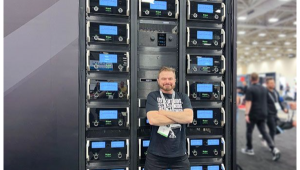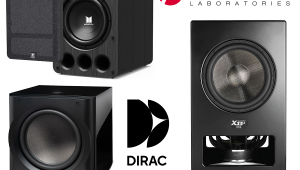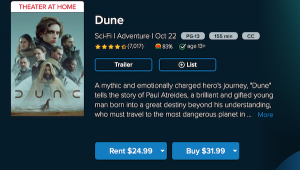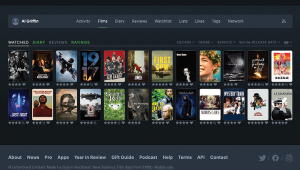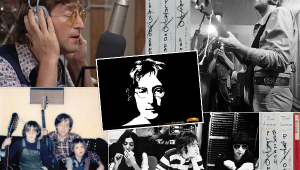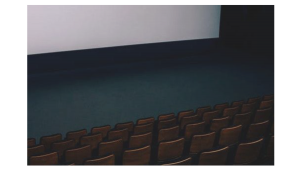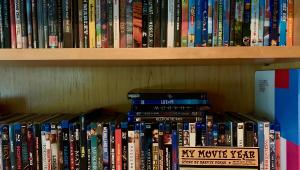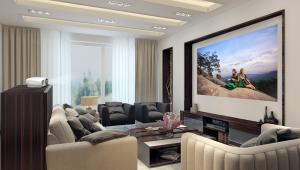The Even Bigger Picture

 These significant shifts have had startling effects. At a Hisense press event, it was revealed that sales of 85-inch TVs had increased thirteenfold over the previous year, and the company struggled to meet the overwhelming demand for 98-inch TVs. Samsung has also stepped into the fray with a 98-inch Crystal UHD model priced at $3,999 and available at Costco and Sam’s Club.
These significant shifts have had startling effects. At a Hisense press event, it was revealed that sales of 85-inch TVs had increased thirteenfold over the previous year, and the company struggled to meet the overwhelming demand for 98-inch TVs. Samsung has also stepped into the fray with a 98-inch Crystal UHD model priced at $3,999 and available at Costco and Sam’s Club.
This size is no longer a niche market. One can’t help but ponder the price drops these TVs might see by Black Friday, especially considering Best Buy is selling a 98-inch TCL model for $2,500 as of this writing. The road ahead seems filled with even more dramatic price shifts. These prices compete directly with ultra-short-throw (UST) projectors.
While it might be tempting to get nostalgic over past media consumption trends, the relentless advance of technology continually disrupts old paradigms. As I’ve noted before, we’ve now entered an era where cinematic screen sizes are not only desirable but also financially attainable through the purchase of a TV. A discerning buyer can now equip their living room with a system that can surpass dedicated home theaters of the past thanks to high dynamic range (HDR) — and particularly so for those who enjoy a variety of content beyond just films.
The choice boils down to whether one aims for the best personal experience or to create a communal viewing atmosphere. This is similar to choosing between investing in a stereo system or high-fidelity headphones. The booming growth of the headphone sector is no secret; Apple now earns more from AirPods sales than the entire consumer speaker industry combined.
Dedicated home theaters are excellent for group entertainment, offering multiple rows of seating to accommodate friends and family in an ideal audiovisual environment. However, from my experience — and this isn’t rare — it’s often challenging to engage others in an activity that isn’t their own passion, even among family and close friends. This raises a question for the cinephile who values cinematography: perhaps instead of investing in a projection-based system, the same funds might be better spent on a top-tier TV.
A 97-inch OLED TV, costing about as much as a high-end Sony or JVC home cinema projector, will surpass the projector in sharpness, contrast, and brightness. It supports Dolby Vision, offers low latency, and high frame rates for gaming, catering to a broader range of interests while still delivering a striking visual impact in a darkened room.
The advent of these massive TVs doesn’t render projection obsolete. JVC recently announced new 8K models — the DLA-NZ800/DLA-RS3200 and DLA-NZ900/DLA-RS4200 — which boast slight improvements in light output and native contrast. Movie enthusiasts should evaluate what constitutes the ultimate viewing experience for them, whether it’s a TV-based setup in a living room or a high-end projector in a dedicated space.
A Sound Decision
The debate between TV and home theater projection invariably includes audio considerations, particularly how acoustically transparent screens can precisely align dialogue with its on-screen source. In a home theater setup, nothing matches the audio fidelity of a dedicated center-channel speaker placed behind such a screen.
Yet, while I admire expansive multichannel Atmos systems, I’ve discovered that in a living room setting, employing a “phantom center” in a straightforward 4.1 system achieves a remarkable immersive audio effect and accurately positions dialogue. By adhering to the same principles used in two-channel setups, you achieve holographic imaging that not only elevates music but also properly centers movie dialogue on the screen.
Adding more surround and height speakers can certainly enhance the immersive experience, all while maintaining the effective center channel illusion. However, the real advantage may lie in upgrading the quality of your main speakers in lieu of adding more channels.
Based on recent experiences, allocating your speaker (and amplifier) budget primarily to enhance the front left and right channels, rather than distributing it among numerous channels, can yield higher fidelity across various applications while simplifying installation.
In summary, pairing a giant TV with a quality stereo system — a readily achievable feat today with a good streaming amplifier or AV receiver with an HDMI ARC/eARC input — is an increasingly popular and compelling choice.
Related:
The Big Picture (2/2/24)
TCL Supports QD-Mini-LED with New Q Class TVs & Promise to Ship 115” Model “Soon” (5/13/24)
Samsung's 2024 TV Rollout Continues with New Entry-Level OLED Series (5/6/24)
Sony Rolls Out 2024 BRAVIA TV/Home Theater Lineup (4/17/24)
Samsung Adds Second, More Affordable 98” 4K TV to 2024 Lineup (4/15/24)
Samsung Announces Pricing & Incentives for 2024 TVs (4/2/24)
Visions of the Future (3/21/24)
LG’s 2024 QNED Mini-LED TVs Available for Pre-Order (2/29/24)
LG’s 2024 OLED TVs Available for Pre-Order with Perks (2/28/24)
Media Room Insider: Dream Theater [featuring a 98” 4K TV] (2/15/24)
Hisense Launches 100” 4K TV with Crazy 60% Super Bowl Discount (1/25/24)
Sound & Vision CES 2024 Editor’s Picks (1/21/24)
State of TV: CES 2024 Hot Take (1/13/24)
Hisense Enters Big-Screen Fray with 98” & 110” 4K TVs (1/9/24)


